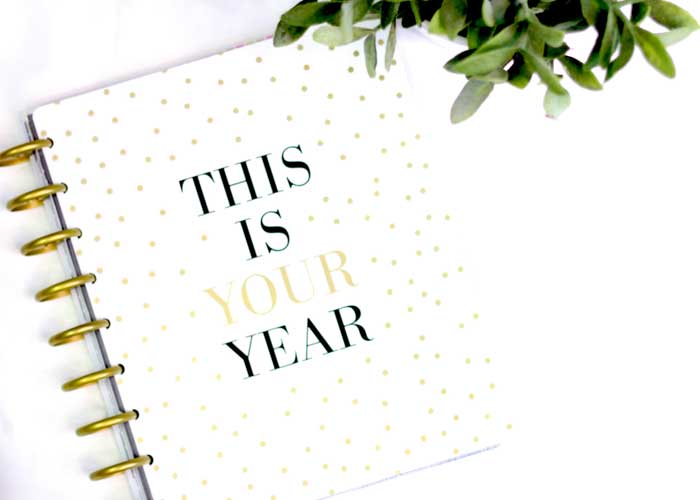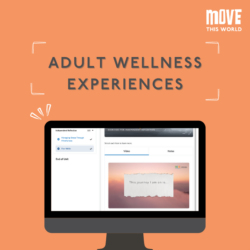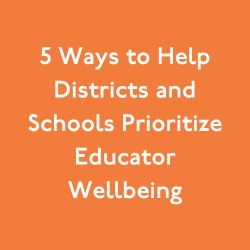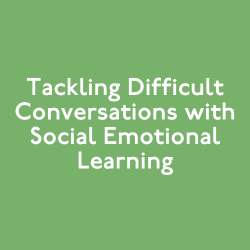
Why set intentions?
Everything that happens in our world starts with an intention. An intention is defined as an aim, a purpose, or something you plan to achieve. This may seem simple, but it’s easy to take for granted just how powerful our intentions can be. We often assume that having an understanding of our long-term goals is enough to guide us, but will these goals bring us happiness each day? Are these goals enough to guide our daily actions? Will our goals help us make choices that are consistent with our values?
Setting a daily intention gives us the power to completely alter how we experience and interpret our daily lives because it allows us to define what our brain should view as important. Our brains are constantly processing our experiences, but a large part of this processing occurs without us noticing. Although this is necessary for our productivity (and sanity), it also means that we might ignore something important. A number of factors determine what our brain chooses to pay attention to or ignore, including our priorities, past experiences, and mood. When we take this knowledge into account we can make a conscious choice about what we want to prioritize and be more self-aware about how our mood, attitudes and assumptions affect how we’re handling challenging situations throughout our day.
Picture yourself entering a mid-year evaluation meeting with your principal. You’re tired, busy and have been dreading the meeting all week. You’ve heard from your colleagues that most of the meeting is spent discussing areas for improvement. You enter the meeting feeling defensive, view the suggestions negatively and leave the meeting feeling dejected. Setting an intention could have completely change how you view this meeting – we’ll show you how.
Intention or goal?
As we said before, it’s easy to set goals and assume these will offer enough guidance. Goals are very important – they help us create plans and stay on track. However, goals can also be dangerous for our mindset. When we place too much emphasis on our goals we can fall into the trap of focusing so heavily on the future that we stop living in the present moment. We might feel discouraged, anxious, or stressed about what we haven’t yet accomplished.
This is where intentions step in. Our intentions can help us stay grounded in the moment and provide a roadmap for living each day by our values. It’s important to continue setting goals, but by coupling them with our intentions we give ourselves the space to be happy in the present while still planning for the future.
Let’s get started
Before we start setting our intentions we need to take inventory of what is truly important to us. Intentions that aren’t authentic and true to our values won’t be meaningful, so it’s important to take the time to evaluate core values before we start setting intentions. Try this core values assessment if you need some help getting started.
Set your routine
Now we’re ready to start setting our intentions. Caroline Webb shares a practical framework for setting daily intentions in her book: How To Have A Good Day. As you get started, it might be helpful to refer to her “3 A’s” (listed below) to help you set your intentions for the day, but as you get comfortable feel free to experiment and make this process your own.
-
Aim: What are the most important things happening today? What are the most important things you need to accomplish today? What do you want to prioritize? What really matters in making your day a success?
-
Attitude: How are you feeling today? What worries or concerns are impacting your mood? How might these feelings impact your day and interactions with others? Can you push aside any negative emotions for now?
-
Attention: Based on your aim, what should you focus on today? What do you want to make sure you take the time to notice?

Thinking through these questions can take you as long or as little as you’d like. Some people choose to simply think about their intention while others choose to write it down. It’s important to settle into a routine that feels natural and works for you. That might mean setting your intentions as you brush your teeth at night, journaling when you first wake up in the morning or taking a few minutes to reflect during your morning commute. Intentions can also be set for smaller activities and events throughout the day, like that end of day staff meeting or a difficult conversation with a colleague. As you become more comfortable, try to set intentions for these smaller activities in your day as well.
Maintain your practice
Let’s return to that meeting we discussed – the one that made us feel both defensive and deflected – and think about how we could have used the 3 A’s to set our intention and alter our perspective.
Activity: Mid-year evaluation
Aim: This meeting is important because it will help me to improve. I want to leave the meeting with action steps I can implement in the next couple of weeks.
Attitude: I’m tired because I’ve been so busy and I’m worried because my colleagues have had negative experiences. Even though I’m tired, I can go into the meeting with a positive attitude. There’s no point in worrying about the meeting based off my colleagues experiences, mine could be different.
Attention: I intend to pay attention and notice the things that I’ve been doing well and the main areas where I could improve. I will look for opportunities to open up the discussion and brainstorm solutions to problems I’ve been experiencing.
Had we entered the meeting with this mindset we probably would have left feeling much differently. Not only would the meeting have been more productive, but we could have left feeling motivated and supported.
Let’s take a look at two more examples of intentions you might set throughout the school year…
Activity: First Day of School
Aim: The most important thing is getting to know my students. I want them to feel excited about the school year and start to feel comfortable in their new classroom.

Attitude: I’m excited for the new school year but I’m also stressed that we won’t get through all the lessons I planned and that the students won’t learn the rules and routines that they need to. I’m going to choose to focus on my excitement. I realize that rules and routines are important, but we can continue to learn these things throughout the first week. Being stressed will have a negative impact on me and my students.
Attention: I intend to focus on what my students are telling me about themselves, their past experiences and their families. I intend notice if they seem nervous or scared so I can put them at ease.
Activity: Team Planning Meeting
Aim: The most important part of this meeting is collaborating with colleagues to plan lessons and brainstorm teaching strategies that will be effective in our classroom to help our students grow.
Attitude: I’m annoyed because our last few meetings have been unproductive. Everyone comes with their own opinions and no one seems opened to new ideas. I’m going to realize that entering the meeting annoyed is only going to make the environment more negative.
Attention: I intend to pay attention to and acknowledge the positive contributions my teammates are making. I will share my own ideas but follow up by asking for other opinions and viewpoints.
By setting an intention, you’re shifting your perspective and focusing on what’s truly important to you. You might be surprised by how quickly your days start to improve!
We’d love to hear from you! Share your intentions with us on Facebook, Twitter, or Instagram using #WeIntendtoMTW or send us an email at [email protected]
Sign up for Move This World’s newsletter to stay up to date on social emotional learning.
Enter your email below!










